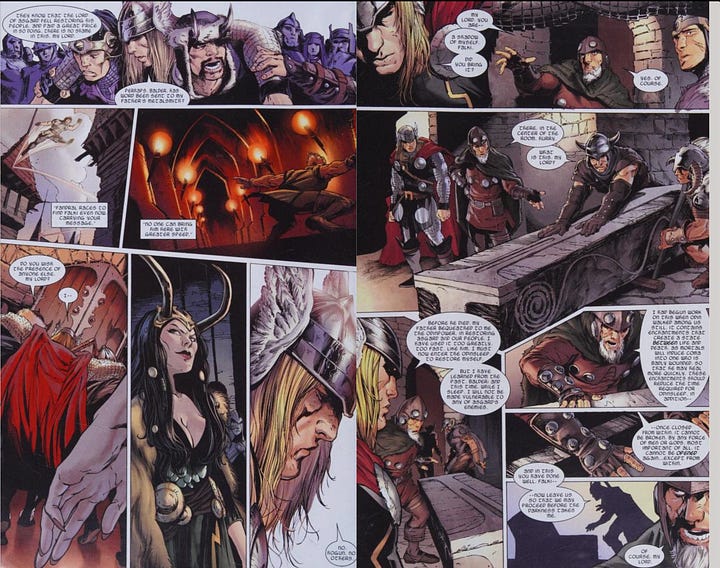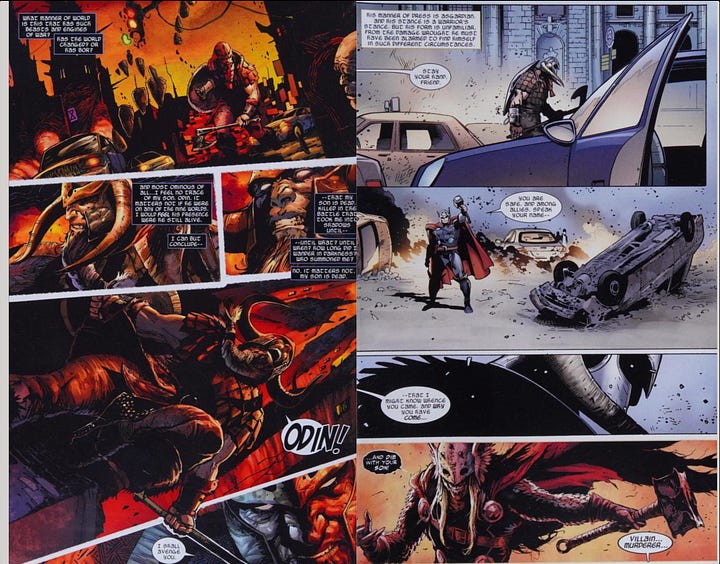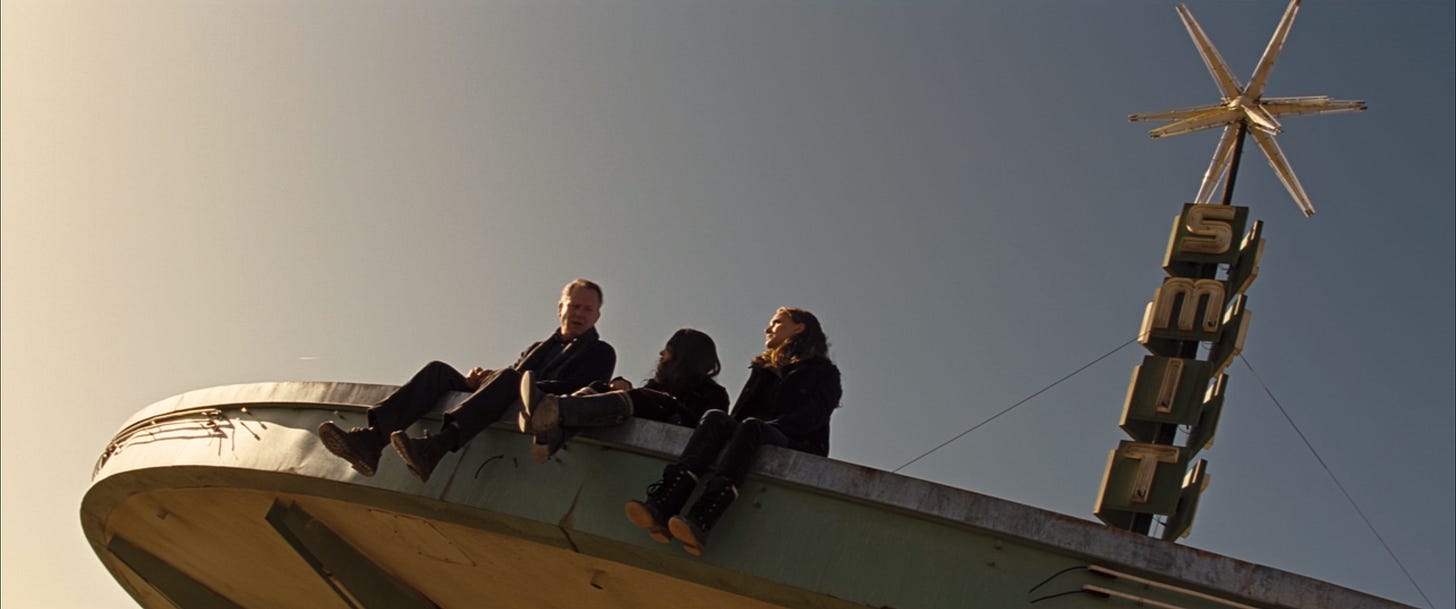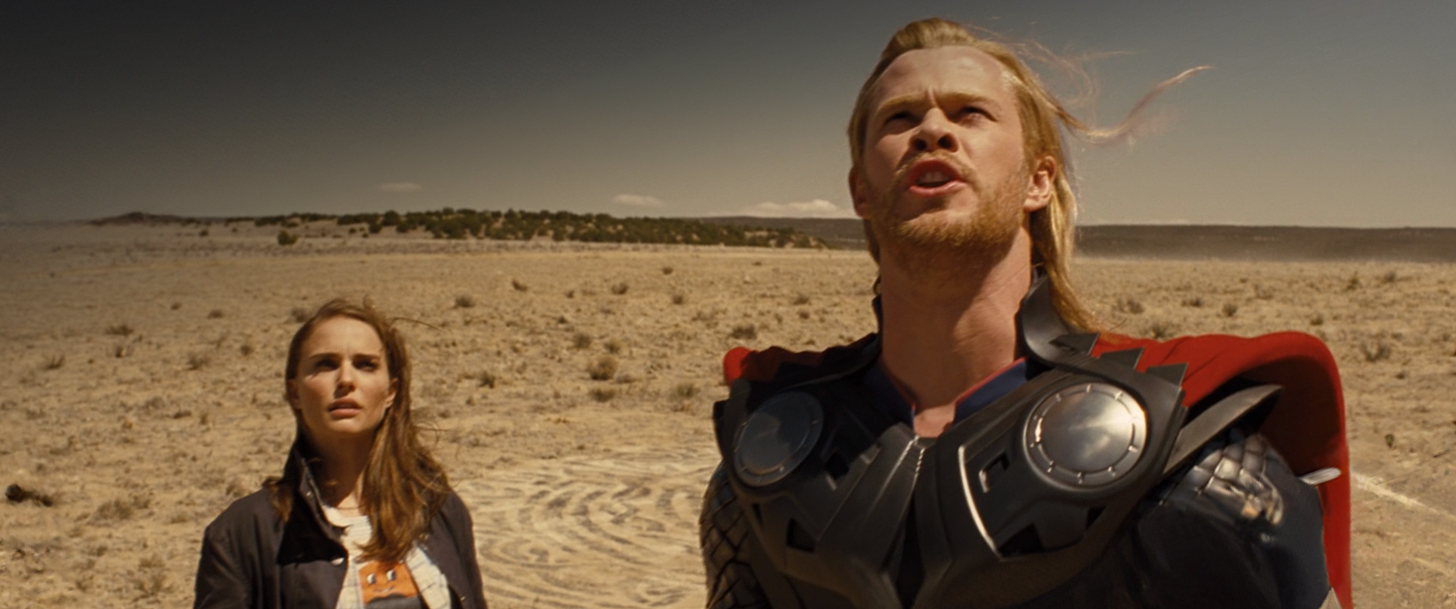I Used AI To See What Kevin Feige's Cut Of Thor (2011) Would Have Looked Like... It's Worrisome
Or: Removing Dutch Angles Is A Slippery Slope
Howdy folks,
1993’s Jurassic Park envisioned a reality wherein technological advancements enabled humans to bring to life real life dinosaurs using only eons old genetic information as their blueprint. Readers, you can start calling me Dr. Hammond because I too have gone against God and brought to life something which never should have seen the light of day — using the rapidly evolving field of artificial intelligence generated imagery, I can now exclusively show you the version of Thor (2011) Marvel execs wished to create but ultimately couldn’t due to tech constraints.
If you don’t know what I’m talking about, I am referring to the “horizontalized” cut. In a 2021 feature with the New York Times, Thor director Kenneth Branagh revealed that Marvel executives attempted to edit the film so as to remove some or all of the many dutch angles Branagh employed throughout the film. Here’s Branagh’s quote on the matter (emphasis mine):
Here is my personal inflection on this. Although, as they say, we went in a different direction, it was still in the film: my personal take — the Dutch angles, which for me seemed natural but created a miniature furor. Marvel actually tried to see whether they could horizontalize them again. But I was thrilled they couldn’t; that kept a personal stamp on it. You try and do that in all the films. They are amazing opportunities, and you’re well paid, but it’s also an enormous amount of stress, so you really only want to do something that you think will reward you in terms of gold of another kind.
Branagh’s choice to use Dutch angles is, I believe, a very well founded and impressively realised decision; not only does it give the film a “personal stamp” but it also pays tribute to comic books as an artform, specifically the use of slanted and irregularly shaped frames to tell a story. I opened a random Thor comic on archive.org and had no difficulty finding some examples:




The variance in frame shape, size, and angle imbues the storytelling with a sense of dynamism and purpose. And while Branagh doesn’t go nearly as far as Ang Lee or Edgar Wright in recreated the layout of a comic book, his use of Dutch angle in Thor is in my view a restrained homage to the form.
Thor’s Dutch angles proved divisive not just amongst Marvel Studios heads but also general audiences. You can find plenty of chatter online about what some consider Branagh’s overreliance on the technique — JJ Abrams’ use of lens flares in Star Trek (2009) is an oft returned to comparison.
Whether you personally like Branagh’s decision or not however, you cannot deny its intentionality. As the man himself says, the Dutch angles are a “personal touch” a true sign of a creative spirit realising his vision through the camera lens.
Which makes it all the more disappointing that Marvel considered “rehorizontalizing” them. It seems even in the very early stages of the MCU Marvel favoured visual hegemony over artistic expression. Their effort proving unsuccessful is a victory for intentional and well planned filmmaking. Branagh’s economical shooting turned out to be a blessing as there was no wiggle room in the footage for Marvel to put together a sanitized cut — the Dutch angles were baked in.
Directors have been handcuffing editors in this way for decades, refusing to shoot alt, “safer” takes they’re certain the studio will favour. But what happens when this strategy is no longer viable? What if, almost instantaneously, studio heads and money men can conjure up shots and scenes that were never in fact shot? This, dear readers, is the danger of AI.
Some AI proponents have argued the technology will one day mature to the point it becomes an artist’s best friend, it will help screenwriters overcome writer’s block, save illustrators time sketching, and cut down the time it takes to edit a film.
The more likely scenario in my view is that it becomes the best friend and close ally of the gatekeepers. I do not fear AI writing emotionally devastating, genre defining and impressively innovate scripts. I do however worry about the day a studio exec can instruct an AI to reformat a writer’s script to fit a Robert McKee-esque structure, “dispense with the unique characters, smart dialogue and interesting POV but make sure there’s a chase scene on page 60!”
Feedback that formerly came in the shape of notes which could be artfully interpreted (or ignored altogether) could soon easily by input to a machine which will follow orders to the letter.
In order to illustrate this problem, I’ve brought into being Marvel’s preferred cut of Thor, one where all the Dutch angles are straightened out. To do this I first expanded the frame outward using Photoshop’s new generative fill feature before rotating and cropping the image to recreate the original frame sans lean. I’ve left some before and afters at the end of this essay for you to peruse.
My intention in creating these images is not to glorify the capabilities of AI art generation but instead warn you of a future where studio interference becomes easier and cheaper, where less risks are taken and where fewer movies have a personal touch. It seems the technology is headed in that direction, but where technology goes we as audiences are not simply doomed to follow. The onus is now on us to, more than ever, celebrate and champion films which do take risks and bear the fingerprints of their creators. We must signal to film studios that personal expression is paramount. We must not let art merely become content.














